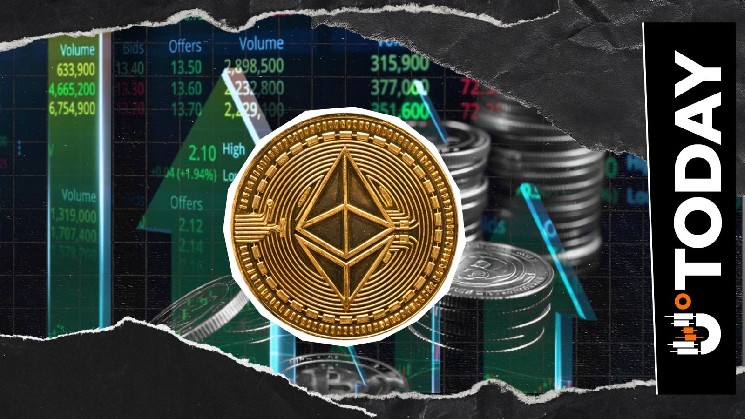On October 30, 2025, Ethereum (ETH) BLOB fees (data usage fees on Ethereum's L2 network) hit an all-time high. Although generally painful, such spikes indicate high demand for Ethereum (ETH) throughput. Ethereum’s upcoming upgrade, Fusaka, is expected to alleviate such surges.
42,000 Gwei: Ethereum (ETH) BLOB fees hit new ATH record, community sees 'high demand'
Ethereum (ETH) blob fees (fees paid by layer 2 blockchains for using Ethereum's computational resources as a data availability layer) set a historic record on October 30, 2025. This indicator suddenly exceeded 42,000 Gwei, as mentioned by Ethereum supporter @materkel in X.
I don't know if anyone noticed, but BLOB fees shot up to crazy levels yesterday.
The highest value reached 42,036.2 gwei (a new record) and remained above 20,000 gwei for about 30 minutes.
This is exactly what happens when rollups start bidding against each other when demand is high.
The current average fee is… pic.twitter.com/6SvBv2mJMp
— materkel.eth 🦇🔊 (@materkel) October 31, 2025
After this sudden spike, Ethereum (ETH) blob fees remained in a very high zone above 20,000 Gwei for almost an hour.
As the speaker explained, this clearly shows that Ethereum (ETH) is in high demand at the moment. The L2 rollup drove up the price by competing with each other for Ethereum (ETH) resources.
Ethereum (ETH) enthusiasts highlighted this as the clearest signal of interest in Ethereum (ETH), denouncing the theory that L2's popularity is somehow threatening the largest smart contract platform.
Ethereum is currently in high demand and rumors of L2 being extracted are FUD
This process is not necessarily reflected in the end user's transaction feed. Rollups offset this imbalance by subsidizing blob fees. At the same time, such anomalies could damage Ethereum (ETH) user economics.
Will the Ethereum Fusaka hard fork fix this?
The opportunity to protect the network from such unpredictable spikes will be on the agenda of Fulu-OSAKA, or Fusaka, one of the biggest post-merger Ethereum upgrades.
EIP-7918: Blob base fees limited by execution costs included in Fusaka, when used in conjunction with the Peer Data Availability Sampling Scheme (PeerDAS), steepens the dynamics of blob fees and ultimately makes the use of Ethereum (ETH) L1 in rollups even more cost-effective.
As previously covered on U.Today, the Ethereum Fusaka upgrade is scheduled to go live on mainnet on December 3, 2025. This upgrade has already been activated on Hoodi, the leading Ethereum testing network.
Ethereum Fusaka extends the development of Pectra in terms of speed, security, and optimized L1/L2 interactions.

